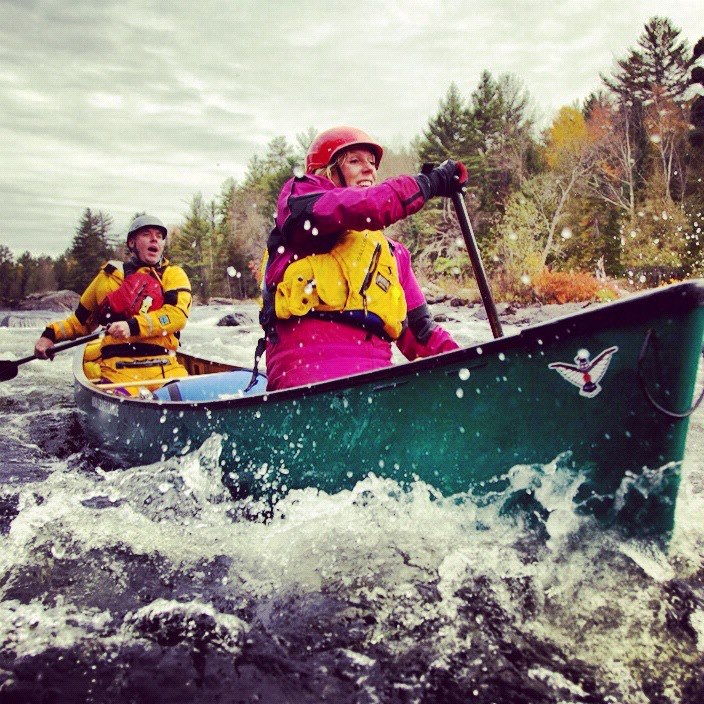
How to choose the right boat
We have been noticing a recent increase in interest for online questionnaires to find the right boat for an individual. The Complete Paddler actually wrote a program for our website years ago to try and come out with a more effective one, but it failed in our eyes so we never published it. Our questionnaire just kept getting longer and longer due to the endless variables involved in finding the right boat. Nothing can replace the knowledge and experience of a good sales person. That being said, most paddlers are fairly easy to outfit with less than ten to twenty questions. However, let’s just say ten percent of paddlers are not so easily defined: if those ten percent end up in the wrong boat, the questionnaire has failed and when it fails your safety can be at risk.
We’d like to try and explain some safety features of different types of boats to get you started in the right direction. We don’t want this to be the end of the conversation, or for you to go out and choose a boat just based on this post; the next step is to talk to an experienced sales person, as previously mentioned your situation may have more variables. Let’s start with a few basic questions to ask yourself.
Where will you be paddling 80% of the time? It’s impossible to find one boat to suit all situations, so buy a boat that will suit your 80% and rent or borrow for the rest. Or buy more than one boat!

Rivers
We have run into a few people who think they are just paddling easy rivers and don’t realise they are even in whitewater. Canoe or kayak, your boat needs to be tough, as moving water (even slow moving water) has a lot of force to it. Some rivers are very slow, deep and wide, these should be treated more as small lakes (see next paragraph). Light composite boats are great for portaging but are very fragile and not strong enough for moving rivers. Carbon, Kevlar, composite and fiberglass boats have no place in moving rivers (a few exceptions for experts). Materials like plastic, ABS, Royalex, Formex and Tuff Stuff are ideal: you’ll still have the ability to portage with stronger boats, it is just a little heavier but (in general) if you are river paddling portages shouldn’t be too long. Boat designs are totally different for river. You can easily find our whitewater section of our website but the important thing is to know the difference between whitewater rivers and non-whitewater rivers. Whitewater needs proper training so be very careful here. Be safe and just ask us about this one.

Small lakes
Will you be portaging into different lakes? Carrying kayaks more than a few hundred meters can be difficult and awkward, especially with overnight gear. A Kevlar, carbon, or composite canoe might be a better option if this is the case.
If you’re paddling less than approximately 50 meters from shore and not portaging very far, then any Canoe/Kayak/SUP will be safe enough. If you want to go more than 50 meters away from shore then see the next paragraph, large lakes and oceans. Are you carrying overnight gear? If so you’ll need a larger boat with storage space. The next step is finding one that meets your performance expectations.

Larger lakes and oceans
Recreational kayaks and canoes are unsafe on open water. Especially if you are paddling more than 50 meters away from shore.
Most paddlers think of themselves as recreational, and unless you are racing this is true. The unfortunate part about this label is that manufacturers have misled boaters with the separation of the two categories which are recreational kayaks and touring kayaks. This has become unsafe.
If you have a recreational boat, you do not have a bow AND stern hatch with sealed bulkheads large enough to do a self rescue in deep water and you should not go more than about 50 meters from shore.
You need to stay close to shore with a recreational kayak or canoe because if you capsize, you will not have the required flotation to get back in your boat. This means you are stuck in the water dragging a flooded boat back to shore. Picture it: you are out of your kayak or canoe, treading water and you have one hand on the grab handle of your boat trying to swim with your free arm to shore, pulling that flooded (700lbs) boat through the water. How far can you do that in wavy water that caused you to capsize in the first place? Fifty meters, maybe. Maybe a little further if you’re really fit. That’s not really that far, is it? So if you have a recreational kayak or canoe, you have to be less than a football field’s length away from shore. That’s not that far when you think about it. In a touring kayak on the other hand, the only limitation is your skill level.
Of course, some exceptions can be applied to all of the above information. The goal of this post was to get you on the right path and help you start a conversation with us. If you have any questions, don’t hesitate to give us a call or come in and visit us in person.
We hope this has been helpful and informative. Email, call or stop by for all your questions.
